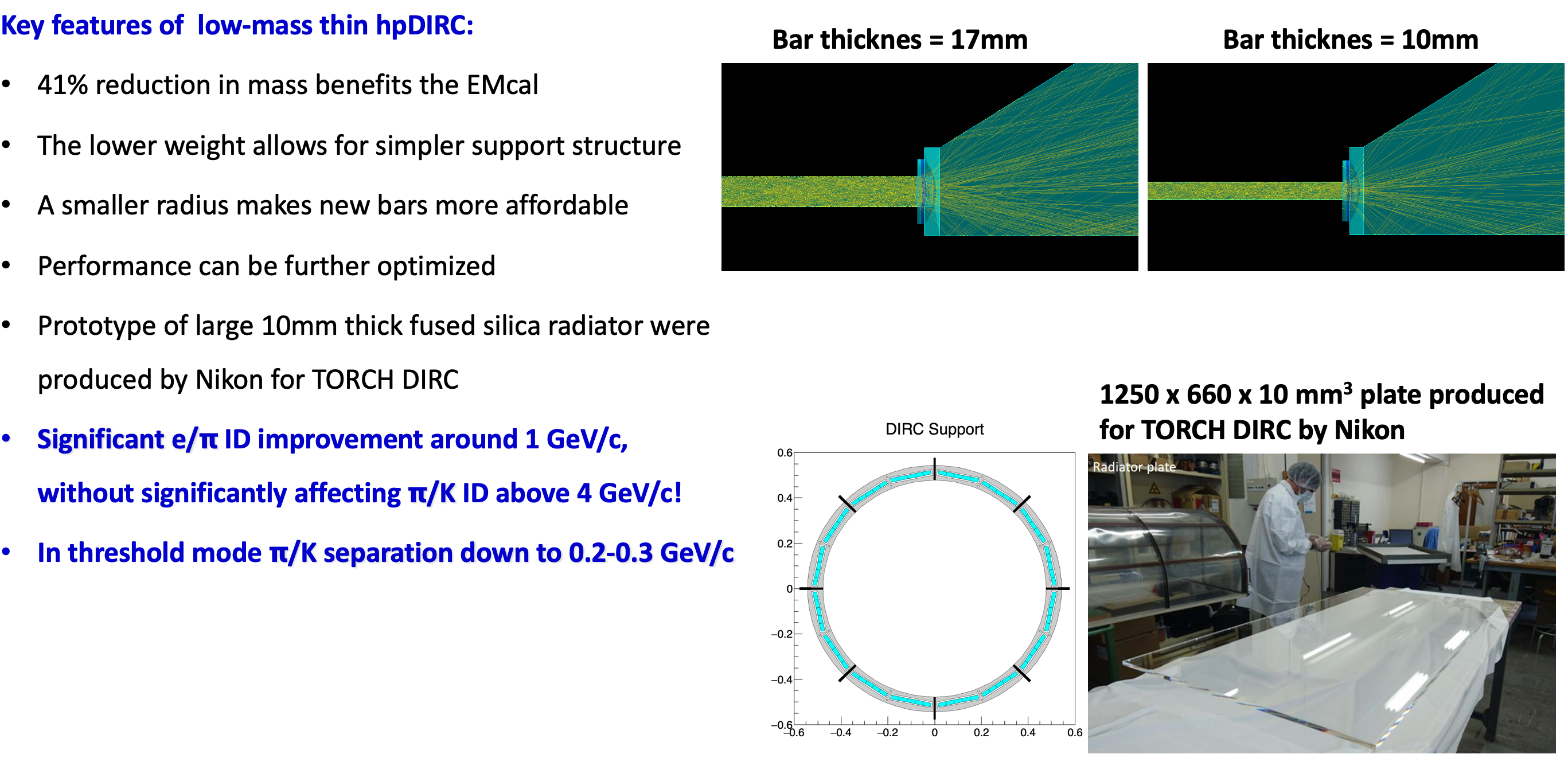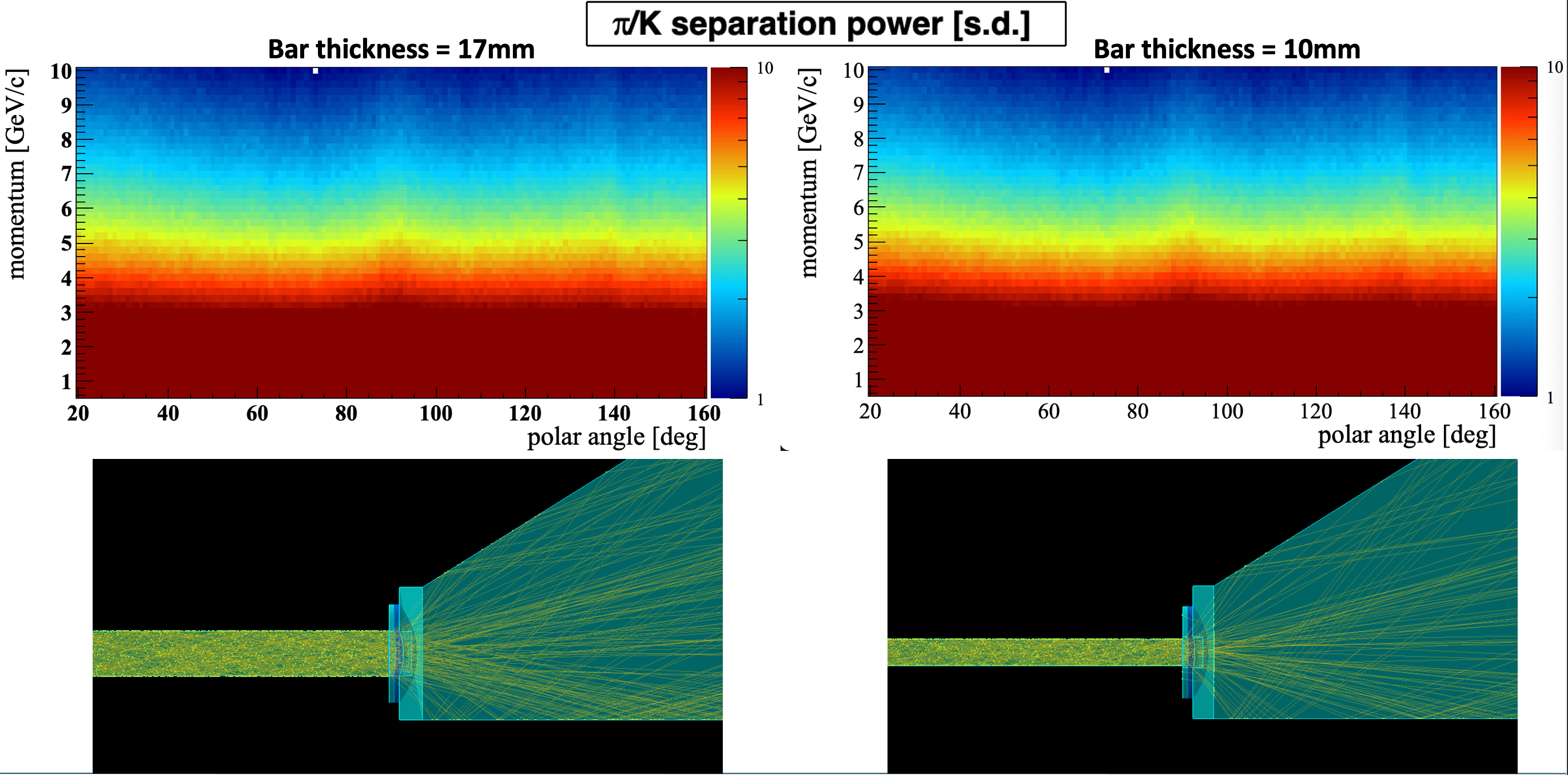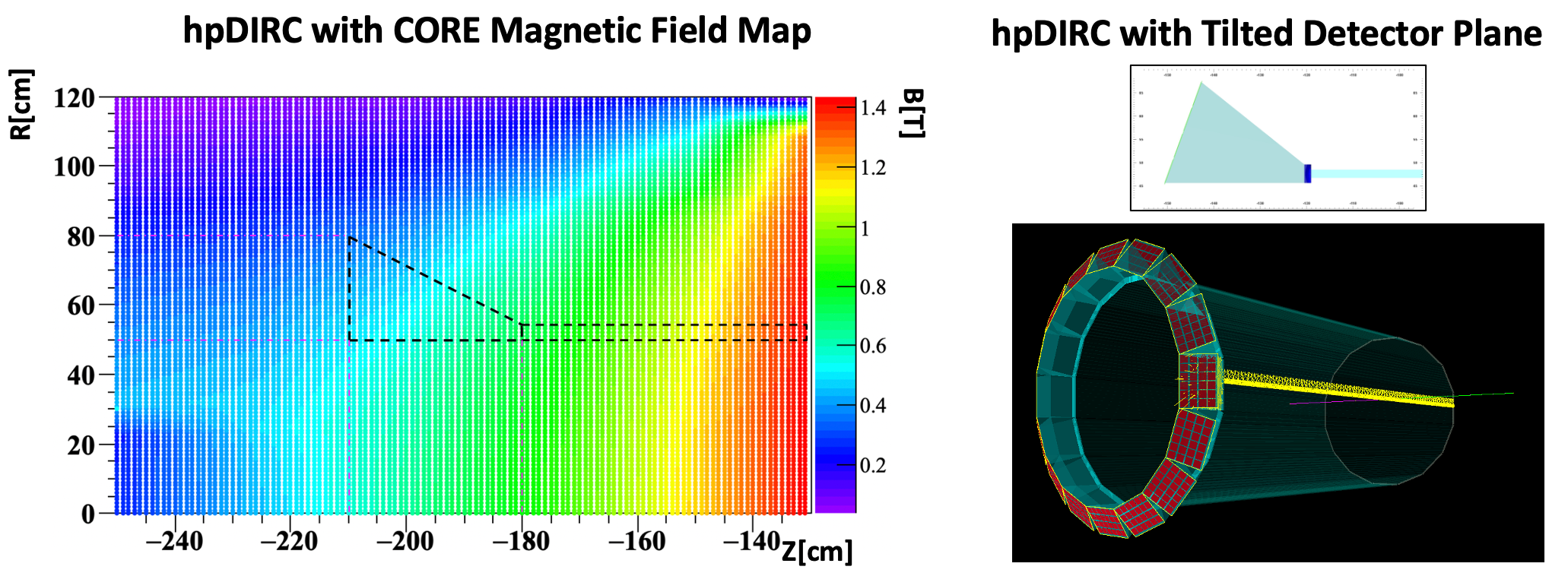Difference between revisions of "DIRC"
(Created page with "CORE barrel hpDIRC geometry: 47cm radius 290cm barbox length 16 barboxes, 5 long radiator bars side-by-side in a barbox Radiator bar: 10 x 35 x 2900 mm3 (T x W x L) (2-3 shor...") |
|||
| (2 intermediate revisions by the same user not shown) | |||
| Line 1: | Line 1: | ||
CORE barrel hpDIRC geometry: | CORE barrel hpDIRC geometry: | ||
| − | + | ||
| − | + | [[File:HpDIRC-CORE1.png]] | |
| − | + | ||
| − | + | Low-Mass Thin hpDIRC assumes 10mm thick radiator bars which are a great option for 2nd EIC detector (most or all of the BaBar DIRC bars will be used on 1st EIC detector). Reduction in mass will be beneficial for the Emcal performance. The small 47 cm radius makes new bars option more affordable. Thinner bars lowers impact of multiple scattering and assures significant electron pion ID improvement at lower momenta, �without significantly affecting pion kaon ID above 4 GeV/c! | |
| − | + | ||
| − | + | [[File:HpDIRC-CORE2.png]] | |
| − | + | ||
| − | + | Performance comparison between 10mm and 17mm (BaBar DIRC) bar thickness in hpDIRC using full Geant4 simulation for 30 deg polar angle. | |
| − | + | ||
| + | [[File:HpDIRC-CORE3.png]] | ||
| + | |||
| + | Pion/kaon separation power comparison between 10mm and 17mm (BaBar DIRC) bar thickness in hpDIRC using fast simulation. | ||
| + | |||
| + | [[File:HpDIRC-CORE4.png]] | ||
| + | |||
| + | Magnetic field on hpDIRC photosensors is below 0.5T! That is manageable field for commercially available options for MCP-PMTs. If needed for better performance, the expansion volume shape can be optimized for MCP-PMT magnetic field performance by tilted backplane. | ||
| + | |||
| + | |||
| + | [[File:HpDIRC-CORE5.png]] | ||
| + | |||
| + | |||
| + | Start time resolution can be obtained using only "dirc" information. Study performed for pions/kaons @ 6 GeV/c using only one track per event in whole DIRC. With more tracks in event the resolution would improve. | ||
| + | |||
| + | |||
| + | [[File:hpDIRC_t0.png]] | ||
Latest revision as of 19:18, 15 August 2021
CORE barrel hpDIRC geometry:
Low-Mass Thin hpDIRC assumes 10mm thick radiator bars which are a great option for 2nd EIC detector (most or all of the BaBar DIRC bars will be used on 1st EIC detector). Reduction in mass will be beneficial for the Emcal performance. The small 47 cm radius makes new bars option more affordable. Thinner bars lowers impact of multiple scattering and assures significant electron pion ID improvement at lower momenta, �without significantly affecting pion kaon ID above 4 GeV/c!
Performance comparison between 10mm and 17mm (BaBar DIRC) bar thickness in hpDIRC using full Geant4 simulation for 30 deg polar angle.
Pion/kaon separation power comparison between 10mm and 17mm (BaBar DIRC) bar thickness in hpDIRC using fast simulation.
Magnetic field on hpDIRC photosensors is below 0.5T! That is manageable field for commercially available options for MCP-PMTs. If needed for better performance, the expansion volume shape can be optimized for MCP-PMT magnetic field performance by tilted backplane.
Start time resolution can be obtained using only "dirc" information. Study performed for pions/kaons @ 6 GeV/c using only one track per event in whole DIRC. With more tracks in event the resolution would improve.





